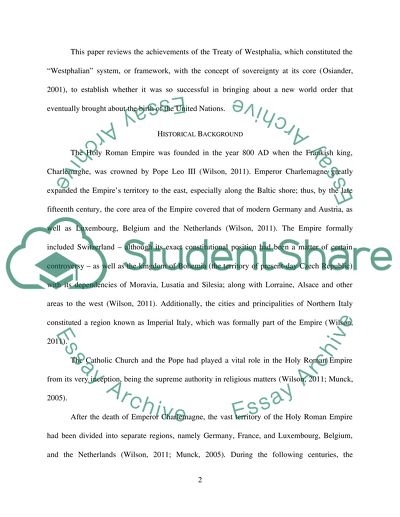Cite this document
(“THE NOTION THAT THE SOVEREIGN TERRITORIAL STATE CAME TO DOMINATE Essay”, n.d.)
THE NOTION THAT THE SOVEREIGN TERRITORIAL STATE CAME TO DOMINATE Essay. Retrieved from https://studentshare.org/history/1464110-the-notion-that-the-sovereign-territorial-state-came-to-dominate-international-politics-following-the-peace-of-westphalia-is-a-myth
THE NOTION THAT THE SOVEREIGN TERRITORIAL STATE CAME TO DOMINATE Essay. Retrieved from https://studentshare.org/history/1464110-the-notion-that-the-sovereign-territorial-state-came-to-dominate-international-politics-following-the-peace-of-westphalia-is-a-myth
(THE NOTION THAT THE SOVEREIGN TERRITORIAL STATE CAME TO DOMINATE Essay)
THE NOTION THAT THE SOVEREIGN TERRITORIAL STATE CAME TO DOMINATE Essay. https://studentshare.org/history/1464110-the-notion-that-the-sovereign-territorial-state-came-to-dominate-international-politics-following-the-peace-of-westphalia-is-a-myth.
THE NOTION THAT THE SOVEREIGN TERRITORIAL STATE CAME TO DOMINATE Essay. https://studentshare.org/history/1464110-the-notion-that-the-sovereign-territorial-state-came-to-dominate-international-politics-following-the-peace-of-westphalia-is-a-myth.
“THE NOTION THAT THE SOVEREIGN TERRITORIAL STATE CAME TO DOMINATE Essay”, n.d. https://studentshare.org/history/1464110-the-notion-that-the-sovereign-territorial-state-came-to-dominate-international-politics-following-the-peace-of-westphalia-is-a-myth.


